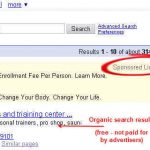Most health and fitness businesses know that regular blog/Facebook posts are supposed to miraculously attract prospective clients, patients and members and grow their revenues and profits.
Yet almost everyone wonders what they should write about to make this magic happen. Today, we answer this question!
Now, before we jump in — let’s get one of the most common misconceptions out of the way. No, posting generic educational or informative health and wellness advice does not attract prospects or convert them into paying customers.
Do not expect to win customers by posting about:
-
- “Five Ways To Mix Up Your Workout”
- “How To Love Veggies When You Hate Them”
- “Fifty Ways To Get Your Eight Glasses/Day”
- “Macronutrients: What Are They, Why You Should Care”
- “Understanding Basal Metabolic Rate”
- “Five Signs of Pre-Diabetes”
- “How The Body Metabolizes Sugar”
- “Fast-Twitch & Slow-Twitch, Explained”
- “Romanian Deadlift: Form Pointers”
First, these questions have all been answered, many times over, by far more authoritative and/or popular websites, blogs and Facebook pages. No need to do it again.
Second, these questions don’t relate at all to the concerns of people actually looking for a gym, a weight loss program, a specialty medical practice, a healthy lifestyle program, or any other health, wellness or fitness solution.
The secret to blog and social posts that win customers is to write about the specific concerns of people in the buying process.
Tap the following five sources for content that speaks directly to the concerns of potential customers and members:
1. Your site’s search queries
Where: Google Analytics, Reports/Acquisition/Search Console/Queries.
What: these are the searches that led visitors to your website
How: Reviewing these searches will give you amazing insights into the problems and solutions real people are actually looking for.
You’ll see searches like:
- “weight loss program for women after having a baby”
- “weight loss for vegetarians”
- “fastest rehab after a bad sprained ankle”
Post about these topics — with specific details about your distinctive approach to addressing these issues.
But: do not post generic advice to R.I.C.E. the ankle, or avoid calorie-dense foods, or re-start fitness routines gradually after pregnancy. That’s all generic advice, which is a no-no.
Remember: the entire point is to convince the site visitor that you’ve got special expertise in this area.
If you can’t say something more specifically relevant to your approach than the info at WebMD or the Mayo Clinic site, don’t bother.
2. Your Google AdWords (now “Google Ads”) search queries
Unless your goal is to have a small, local business (which is perfectly OK, by the way), you’ll have to advertise with Google Ads.
Which is great, because it gives you insight into an extremely valuable source of ideas for blog posts from people who are actually thinking about buying a service or program like yours.
Where: Google Ads/Keywords/Search Terms (not Search Keywords — that’s different)
What: these are the search queries that led Google to present your BlueRibbon Soccer Conditioning ad, and that led to clicks on your ads.
For example, a common query might be “best program for elite soccer training”.
How: This is your opportunity to write posts like these:
- “How To Choose The Right Elite Soccer TrainingProgram”
- “Stella Smith: How BlueRibbon Soccer Got Me My Scholarship”
Both topics directly address key elements of the buying process — helping prospects choose, and offering hard proof that you deliver on your promises.
3. The questions prospects ask you before they commit
Where: Ask your sales and marketing team about the most common questions they get from prospects.
What: You’ll get answers like:
- “If I have to cancel because I lose my job, do I have to pay a penalty?”
- “If I buy a class card, what happens if I move before I use up all the classes?”
- “If I just don’t like my trainer, can I switch?”
- “How many of your weight loss clients keep the weight off?”
How: Write blog and social posts that address these topics (and include them in your FAQ, too.)
For example:
“Three Ways We Look Out For Members” — and explain your policies around job loss, out-of-area moves, and client satisfaction.
4. Third-party reviews of your business
Where: Google Business reviews, Facebook reviews, Yelp reviews
What: These are your current and former clients, members or patients telling it like it is — what they do and don’t like about your health club or weight loss program, and often, why they chose it in the first place. You’ll see comments like these:
“Best ever. I had to suddenly go back home after my mom got sick. When it happened, I called to cancel out of my next class and they just put my membership on indefinite hold and didn’t charge me or anything. Amazing. My last health club kept charging me for six months after I moved and it is SO NICE to be treated like a real person. I love this place.”
“I picked this place because they have older, more experienced trainers, not just bright shiny guys and gals right out of college. I want someone who knows what it’s like have some aches and pains.”
How: Identify themes, and use them as inspiration for blog and social posts.
For example, if your staff is exceptionally experienced, videos or AMA-style posts can be a great way to showcase that expertise.
If you’re all about customer service, an introductory rant about a bad service experience at a different type of business can offer a great segue into a post that explains in detail how and why your approach is completely different.
5. Third-party reviews of competitors
Where: Google Business reviews, Facebook reviews, Yelp reviews, and don’t forget to check the Better Business Bureau!
What: No-holds-barred comments about the good, the bad and the ugly. You’re getting competitive intelligence straight from the horse’s mouth.
“Cannot believe in this day and age that I could not cancel online. Or at the front desk. Or by email. No, I had to send a certified mail to the corporate headquarters. And they STILL kept charging me. Unbelievable.”
“I splurged in January and bought a 12-week training package as my Christmas gift to me. Then my trainer was always late and kept rescheduling but they would not let me switch to anyone else? I guess their trainers are contractors and not employees so they can’t just reassign me? Whatever, I really don’t care how they run their business I just know I will never go back there and I have told all my friends the same thing.”
“The best part is that they don’t talk about failure or backsliding or slips or cheats. They have a really balanced approach that gets you out of the habit of beating up on yourself all the time. I’m really liking it.”
How: Again, look for themes and then post around those themes.
For example, a post that compares and contrasts your approach to healthy lifestyle change vs traditional weight loss or nutrition programs will help prospects decide if you’re a fit for them.




